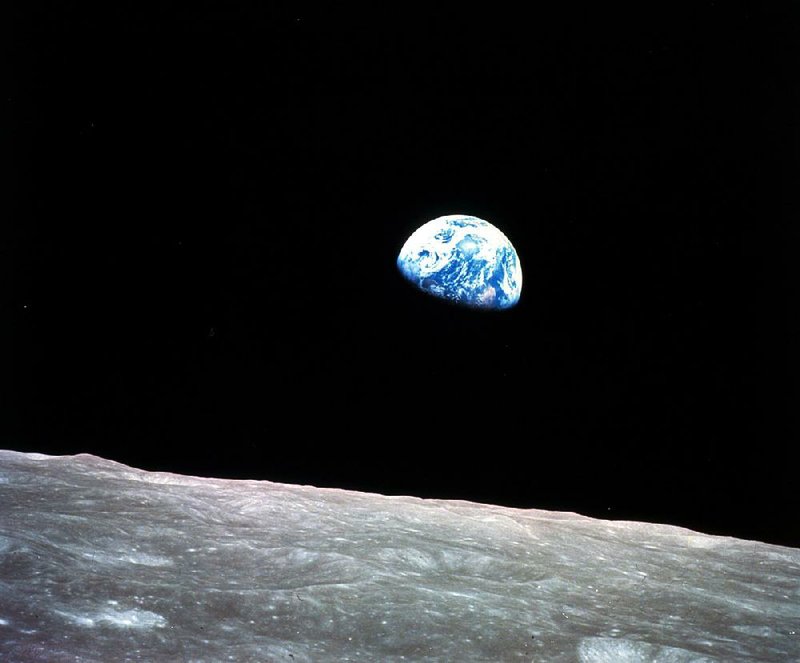As the astronauts completed another orbit of the moon on Christmas Eve 1968, Frank Borman, the commander of the Apollo 8 mission, rolled the spacecraft.
Soon, there it was: Earth, this bright, beautiful sphere, alone in the inky vastness of space.
"Oh, my God," exclaimed Bill Anders, the lunar module pilot. "Look at that picture over there! There's the Earth coming up. Wow, is that pretty!"
Anders knew black-and-white film wouldn't do it justice. But he also knew that he didn't have a lot of time if he was going to get the shot.
"Hand me a roll of color quick, will you," he said.
"Oh, man, that's great," said Jim Lovell, the command module pilot and navigator.
"Hurry," Anders pleaded. "Quick!"
Anders loaded the color film into his Hasselblad camera and started firing away while his crewmates remained transfixed by the blue-and-white vision outside their windows.
"You got it?" Lovell asked.
He did.
The three astronauts splashed down in the Pacific Ocean on Dec. 27.
Two days later, the film was processed, and NASA released photo number 68-H-1401 to the public with a news release that read: "This view of the rising earth greeted the Apollo 8 astronauts as they came from behind the moon after the lunar orbit insertion burn."
Earthrise, as it would be called, went viral, or as viral as anything could in 1968. In the foreground, there was the "magnificent desolation" of the lunar surface, as Buzz Aldrin would later call it -- a lifeless satellite, devoid of color, juxtaposed with a distant cousin in the background, brilliant in blue and white.
The media recognized immediately the power of the image. The New York Times ran it on its front page above the fold. The Washington Post followed a day later.
Life magazine ran a photo essay with a double-page spread of the image and lines from James Dickey, the former U.S. poet laureate: "Behold/ The blue planet steeped in its dream/Of reality."
Pope Paul VI would describe the image of Earth from 240,000 miles away as showing "the dumbfounding proportions of the universe in relation to our infinite smallness."
There had been images of Earth shot from space before. But those images were mostly black-and-white, and blurry. They lacked the vividness of the Anders picture, the still simplicity, and the emotion that came from knowing it was taken not by a robot, but by a human -- "a thrilled, probably homesick astronaut with a finger on the trigger of this Hasselblad," as Stewart Brand, the founder of the Whole Earth Catalog, put it in an interview.
Brand had been seeking an image such as "Earthrise," one that could galvanize the country and touch off a movement. He had led a campaign, asking, "Why haven't we seen a photograph of the whole earth yet?"
The impact of Earthrise on the environmental movement was ironic, because many environmentalists in the 1960s had opposed the Apollo program. Why spend so much money going to space, they argued, with so many problems on Earth?
The first Earth Day was held some 16 months after the photo was released, and today the image endures as a uniting symbol.
"As I looked down at the Earth, which is about the size of your fist at arm's length, I'm thinking, 'This is not a very big place. Why can't we get along?'" Anders said during a video played recently during a ceremony at Washington National Cathedral celebrating the 50th anniversary of the mission.
"To me it was strange that we had worked and had come all the way to the moon to study the moon, and what we really discovered was the Earth."
A Section on 12/25/2018
